Detailed model with extending fold-down ramp.
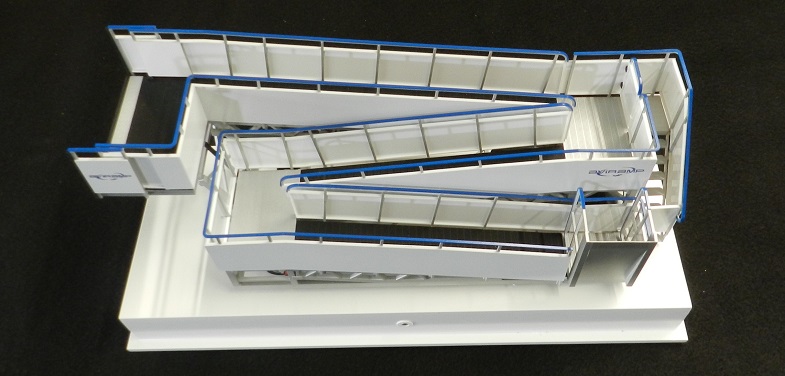
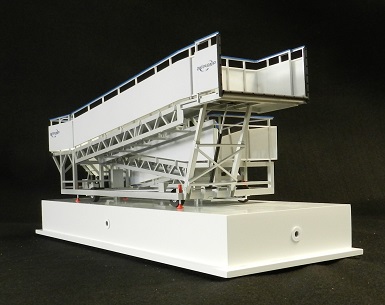
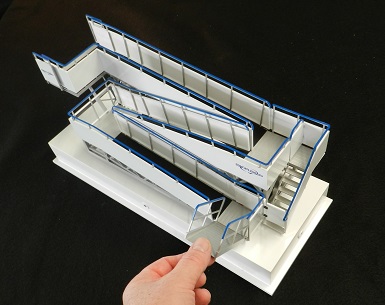
At 1:25 scale this model of an aircraft boarding system was only 450mm long but as you can see from the photos we were able to include plenty of realistic detail including scaled down branding and and even a fold-down ramp. The finished model also came with a clear Perspex cover and a foam lined transportation case.
Mirror divided model creates eye catching optical illusion.
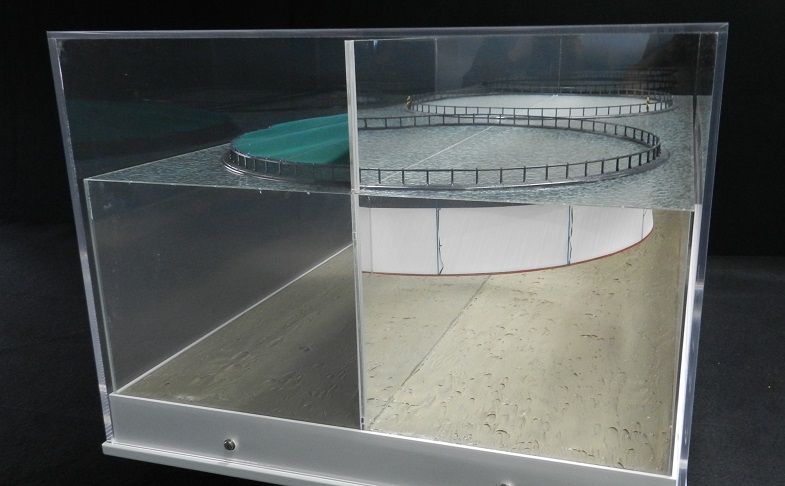
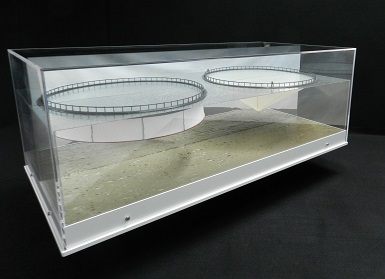
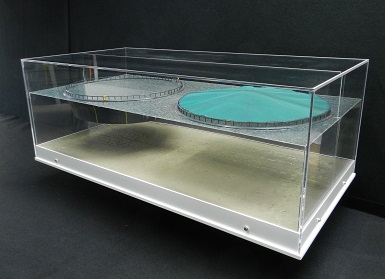
The client for this project, a manufacturer of industrial tarpaulins, wanted to show four “half-models” of circular fish cage products on one compact model which was creating a confusing visual combination. So we came up with the idea of placing a mirror down the centreline so that each half circular model looked whole when viewed against the mirror. You can hopefully see how well this works from the pics above.
Another high quality satellite model for the British space industry.
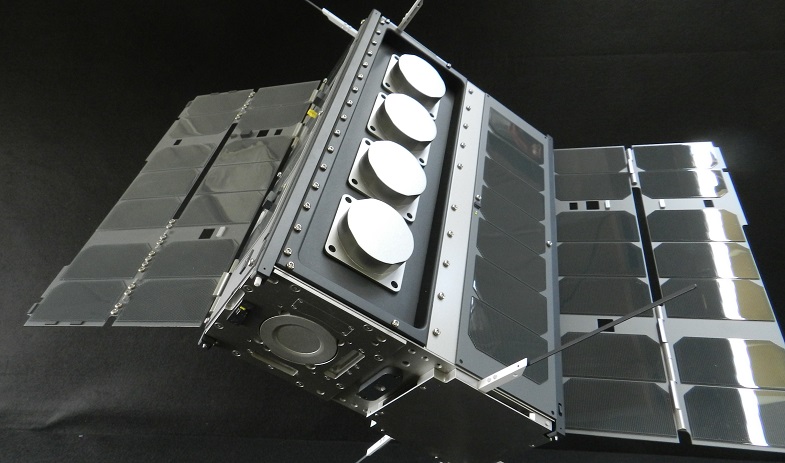
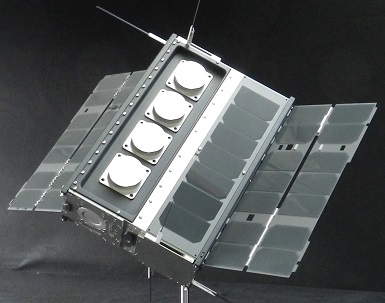
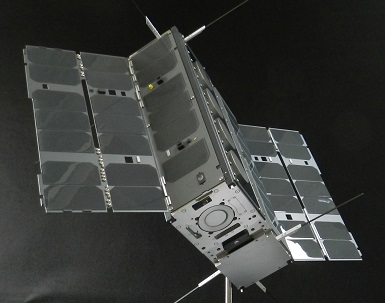
Completed last month, we’ve made several variations of this life-size CubeSat model for a number of different clients and we’re currently in mid-production of a further satellite model for yet another client (who saw this model and liked it). Designed for easier shipping, this model comes as four separate main components – acrylic base; tubular steel mount; main body; solar array panels – that can be easily slotted together on site. Even the aerials slot into place once the main model is assembled.
Aircraft model for exhibition display.
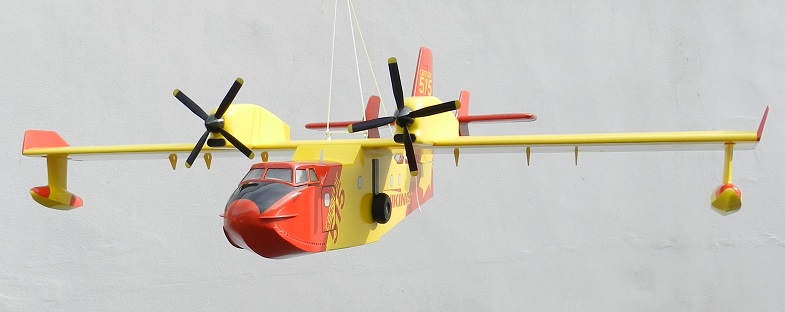
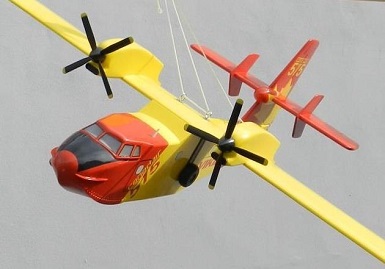
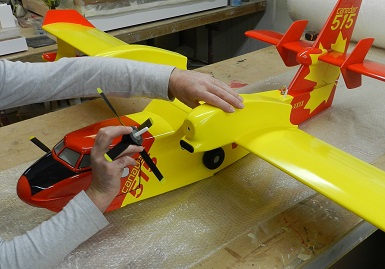
This eye catching model of a fire fighting “water bomber” plane was commissioned to hang above a stand at a trade show event. We particularly enjoyed this project, especially when we reached the stage of adding the Canadair red and yellow livery which really brought the aircraft to life. The model had a 1.5m wingspan so for easier transportation we designed it in 3 separate sections – fuselage, wings and tail plane – that could be easily assembled on site using just 3 bolts. The model was made almost completely from balsa wood so was extremely light. If we’d fitted model engines and radio control gear we could have flown it out of the workshop!
Exhibition display for “Jumping Pillows”.
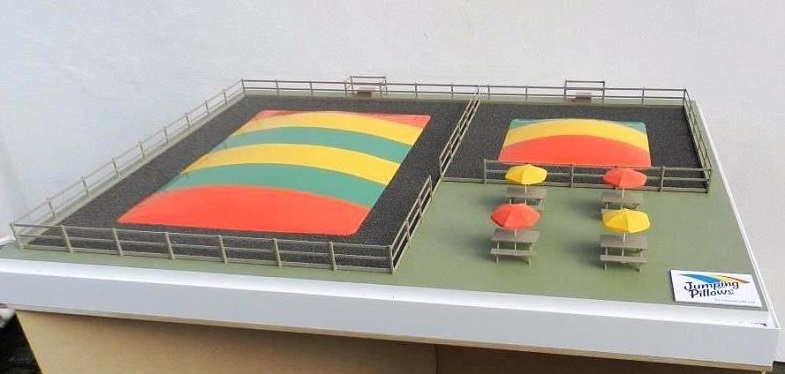
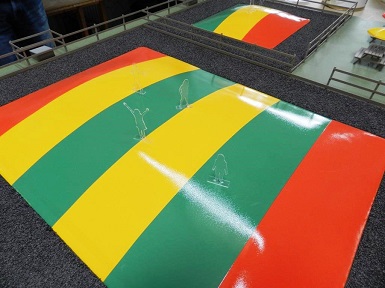
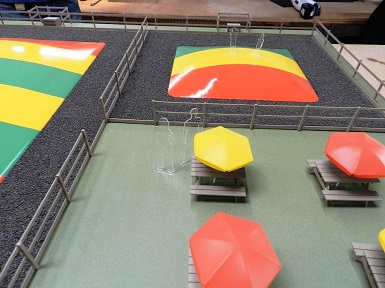
The client for this project “Jumping Pillows”, who specialise in installing inflatable play areas, asked us to design and build an eye catching model for use at exhibition events around the UK. We based this model on one of their recent installations and gave it strong colours and realistic detail so that it really draws the eye. The fencing and picnic tables give a good sense of scale but we also supplied some clear silhouette figures that the client could place on the model as an additional detail if required (you can see these better if you click on the two smaller pics above).